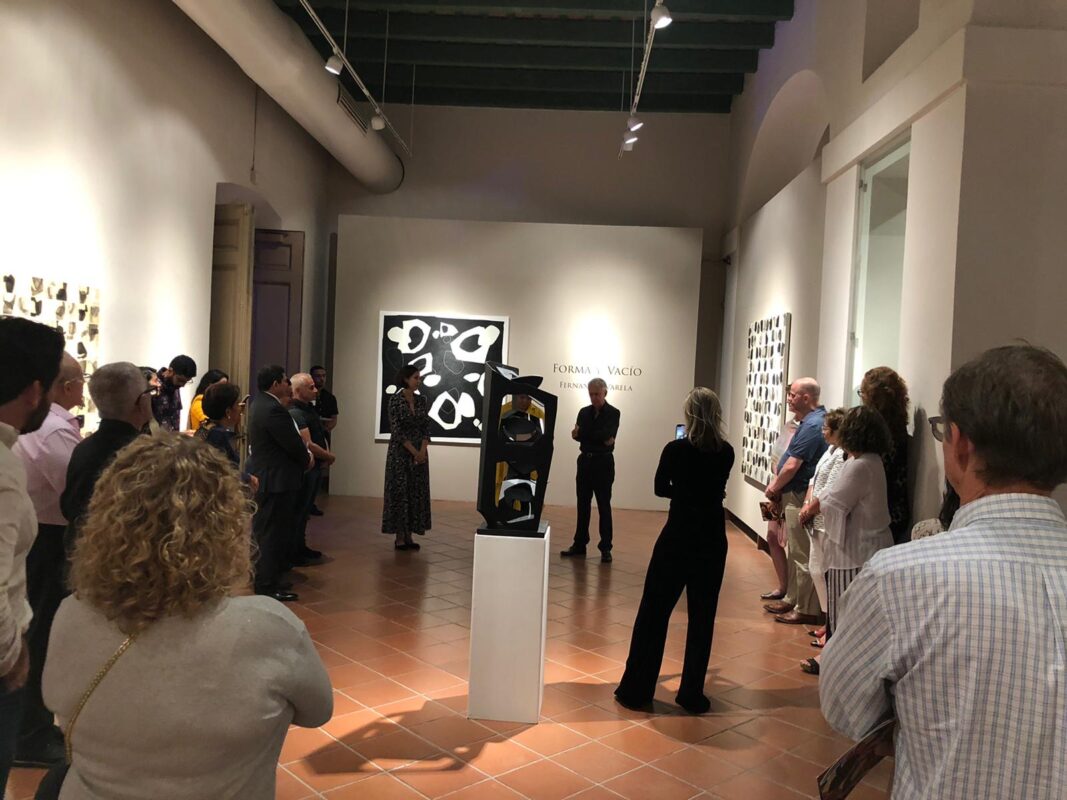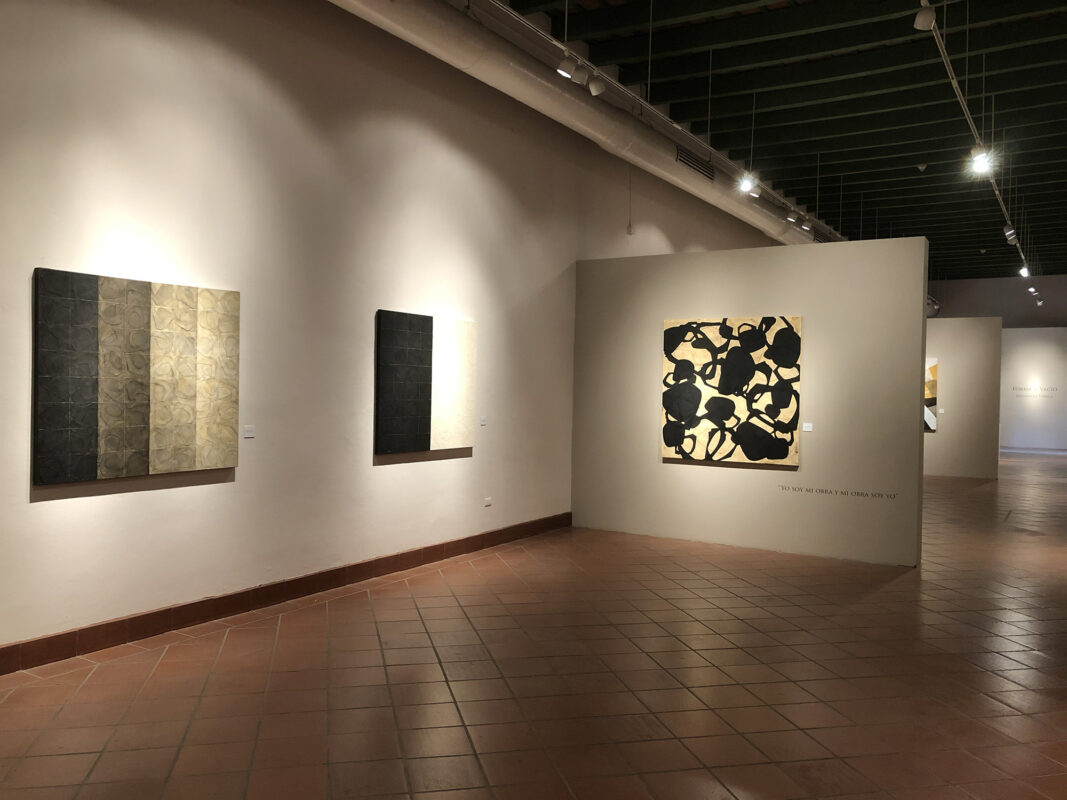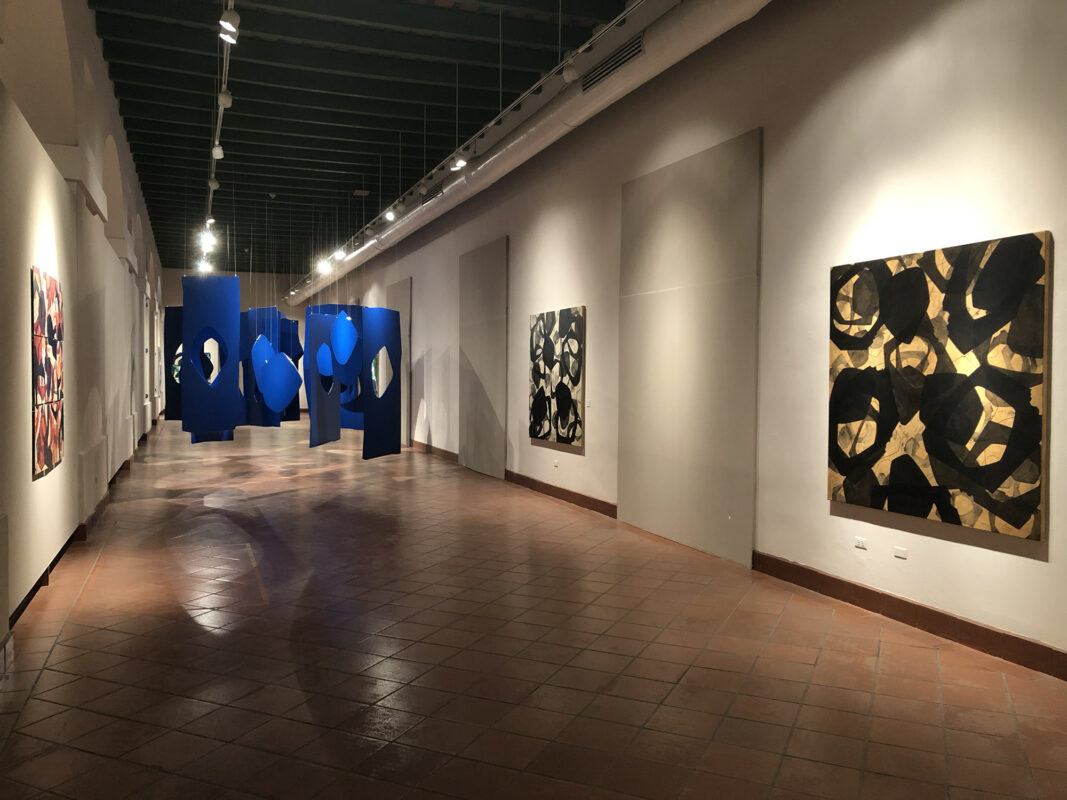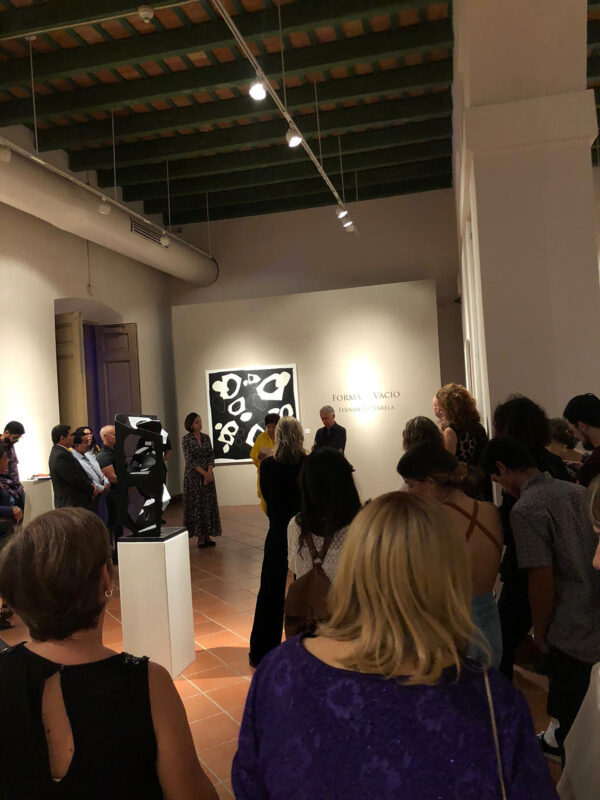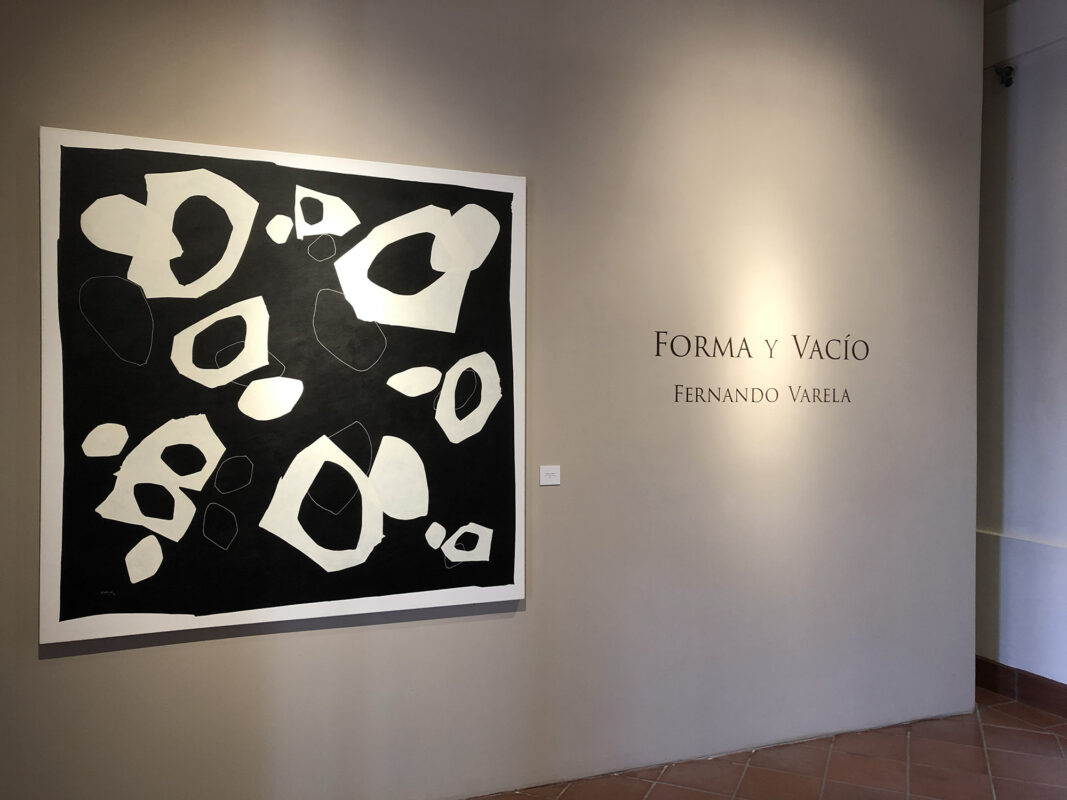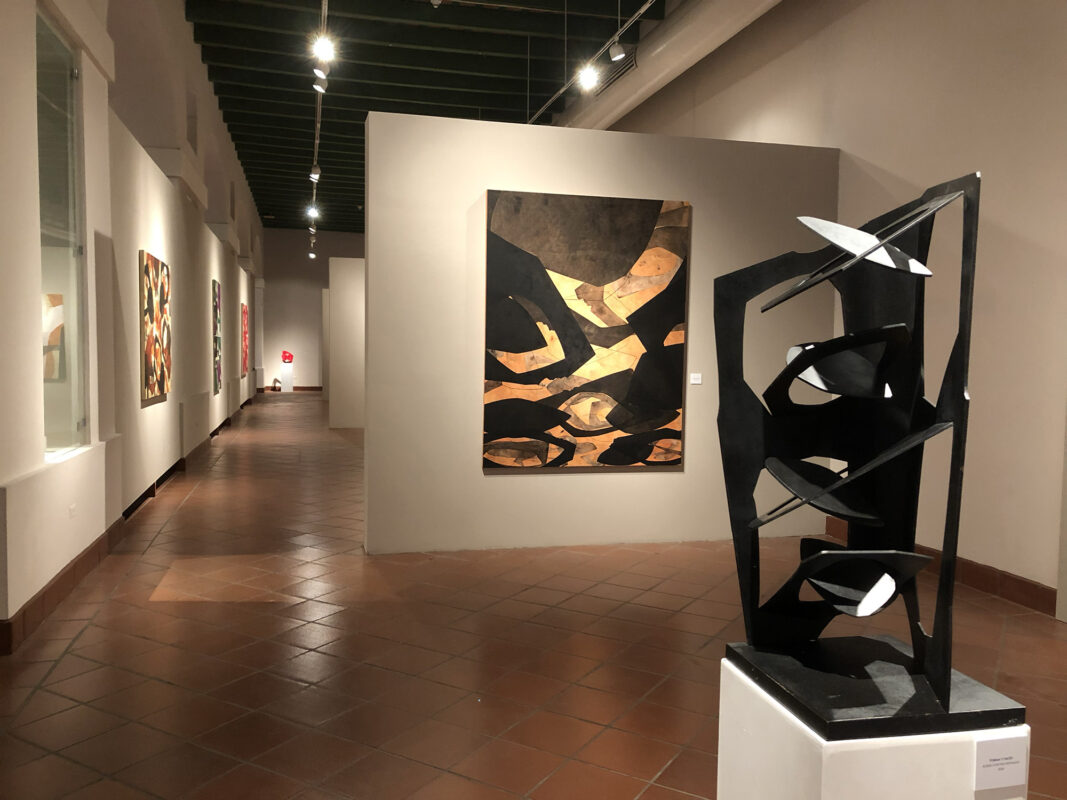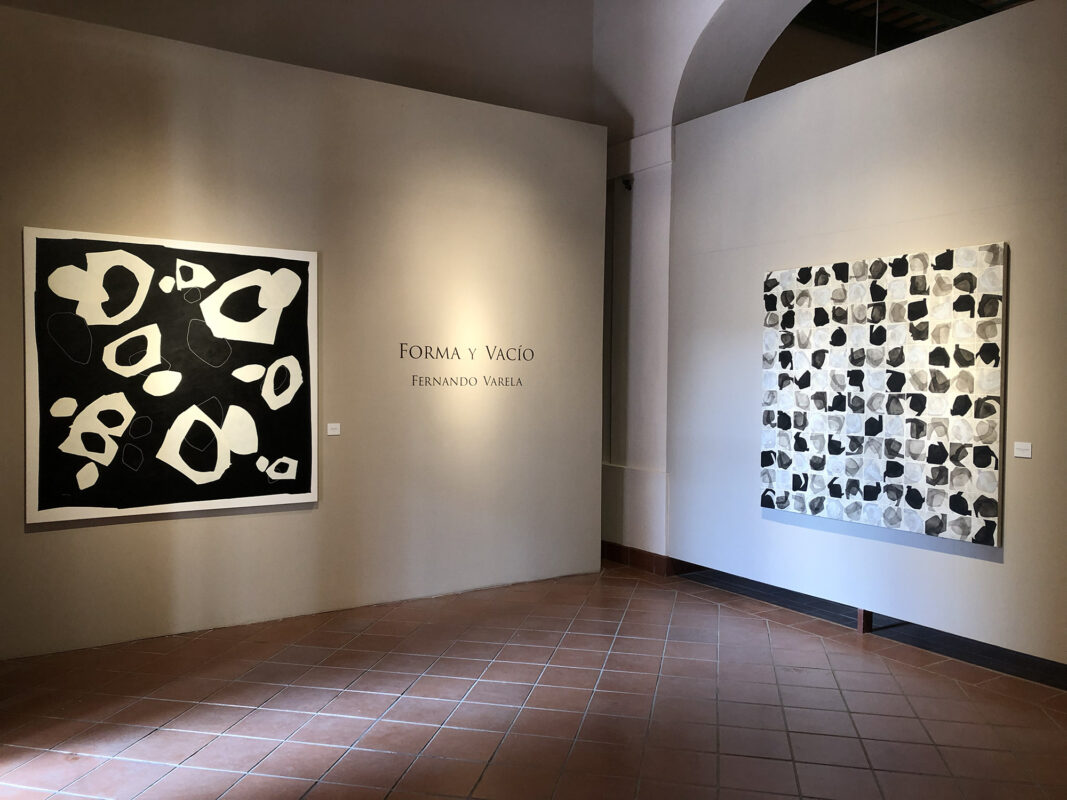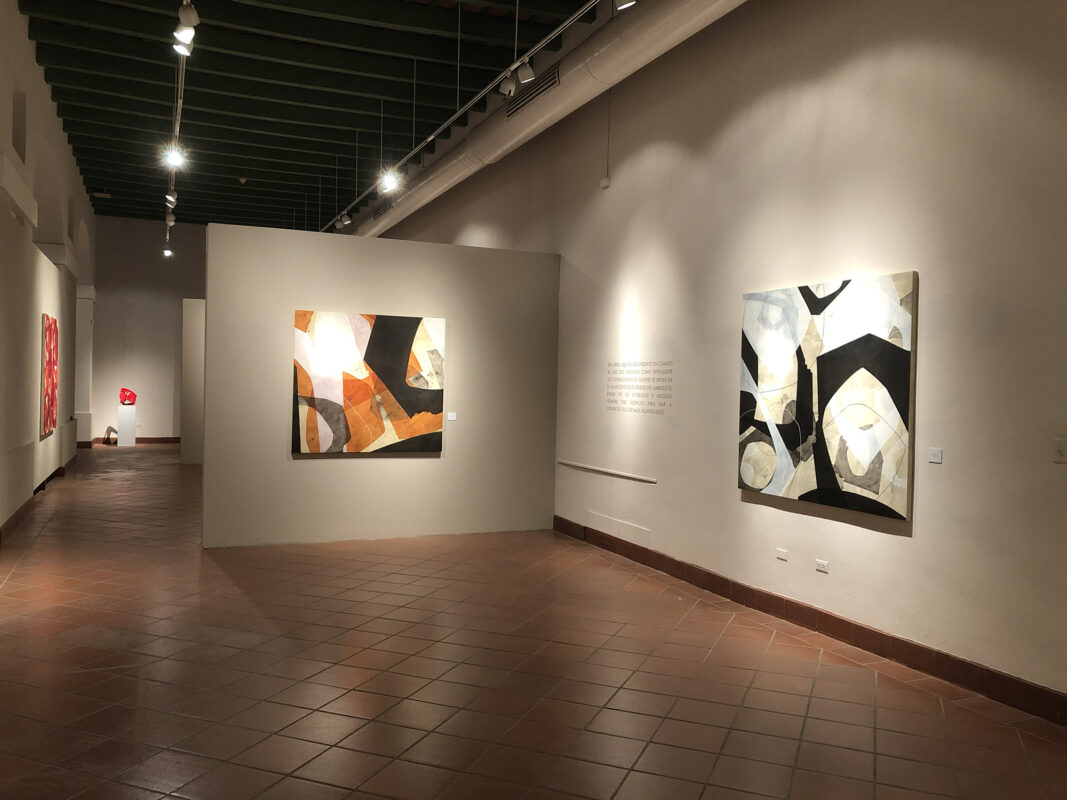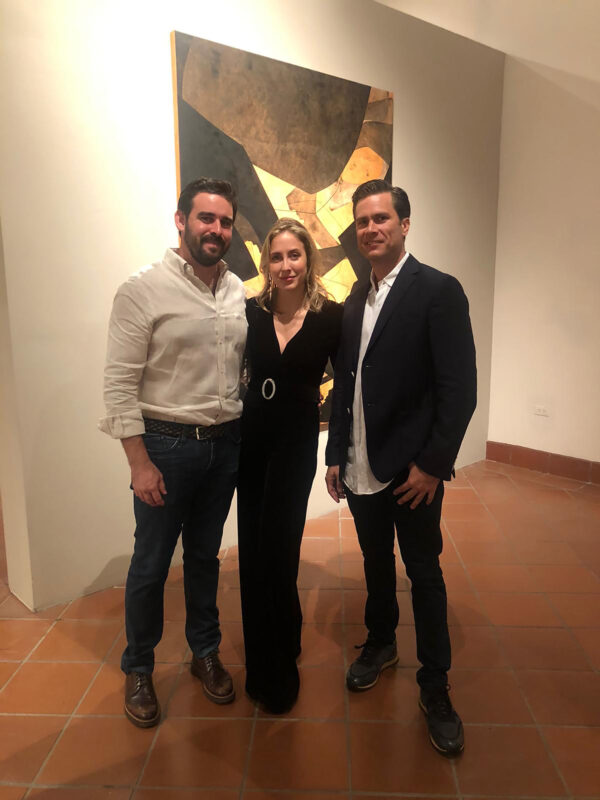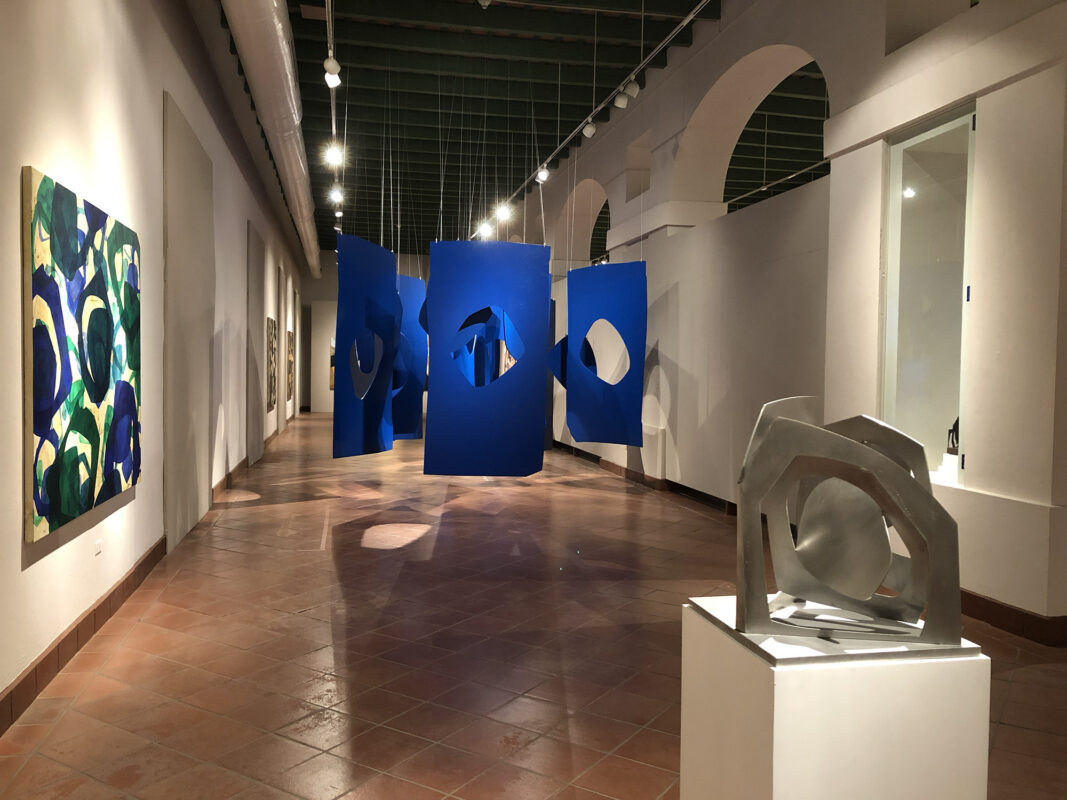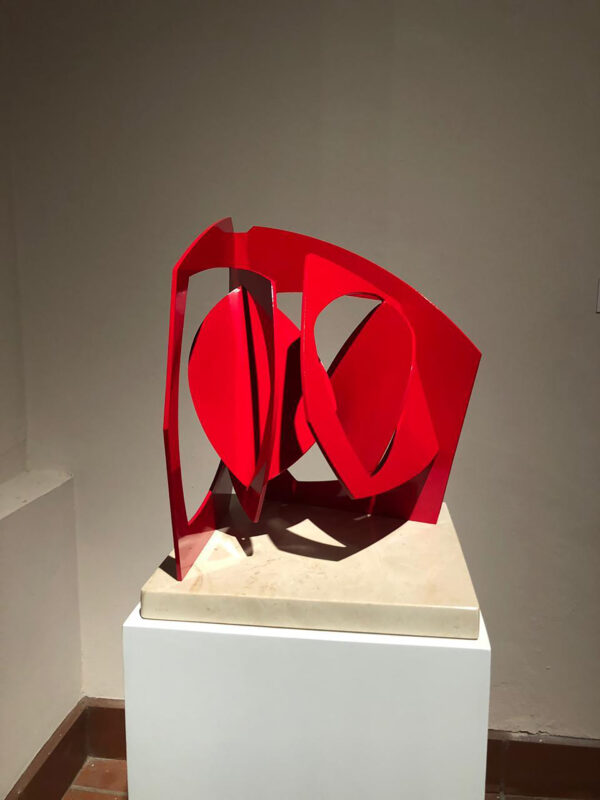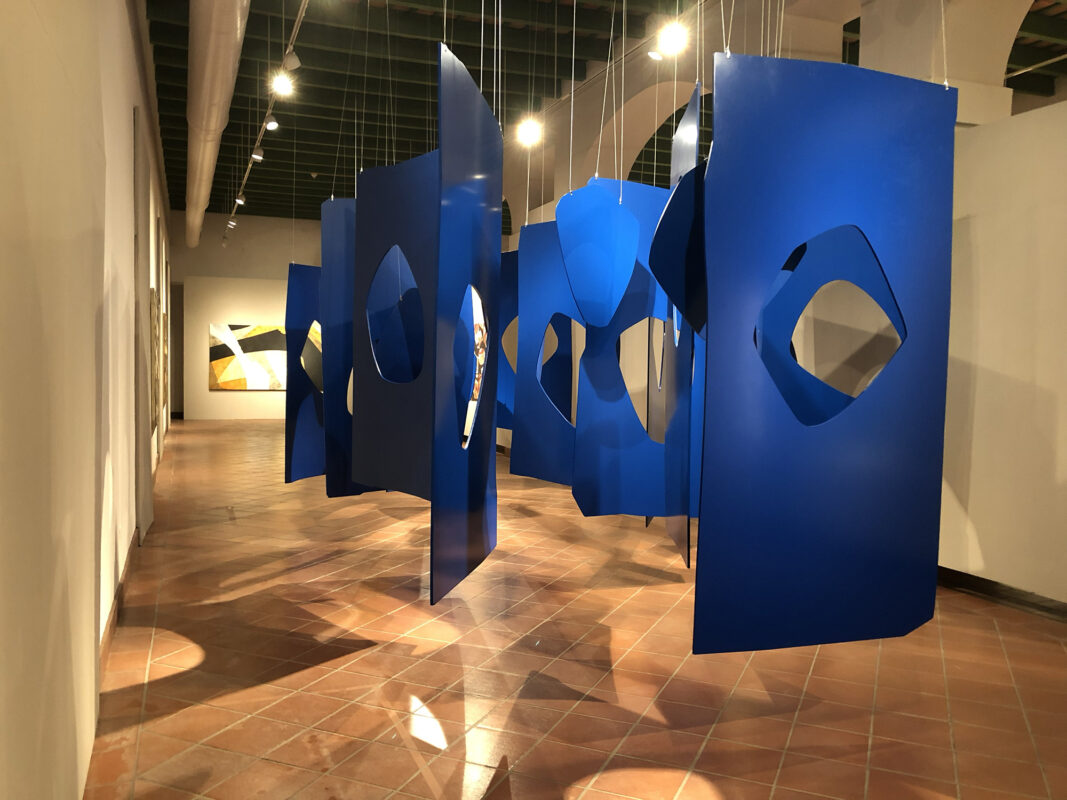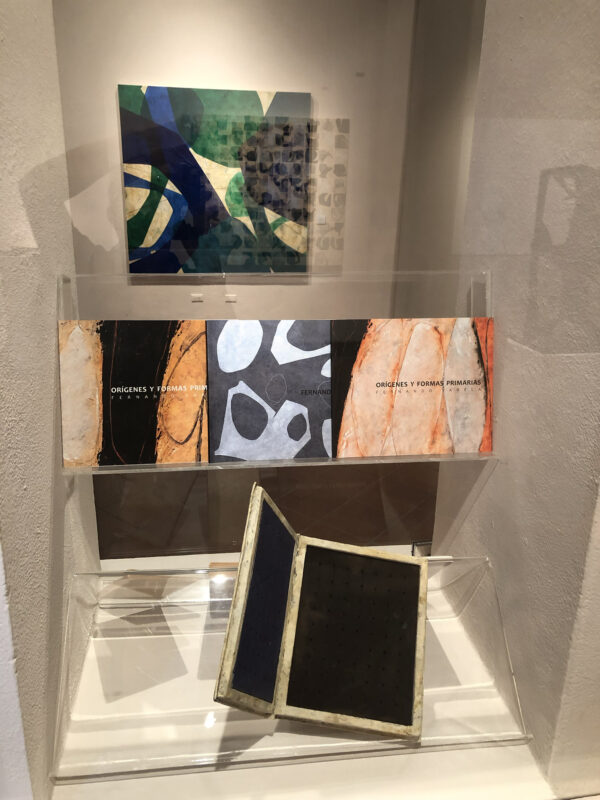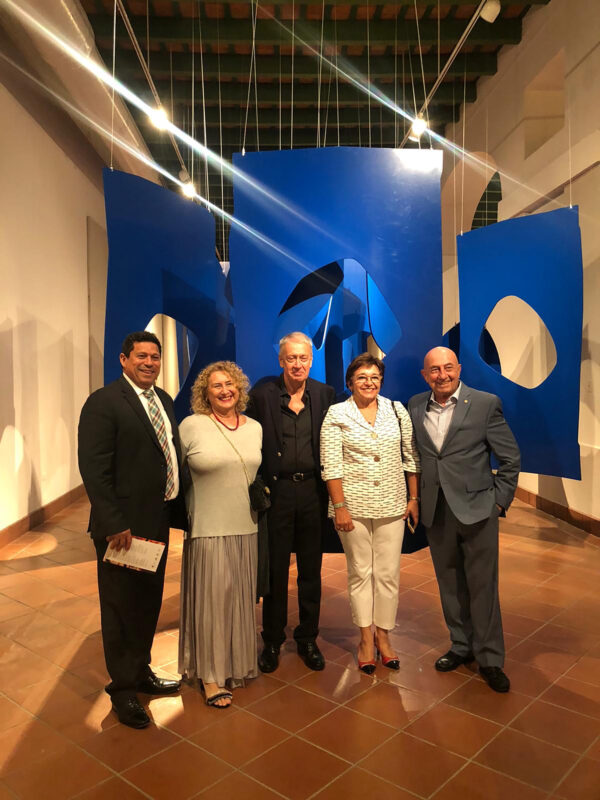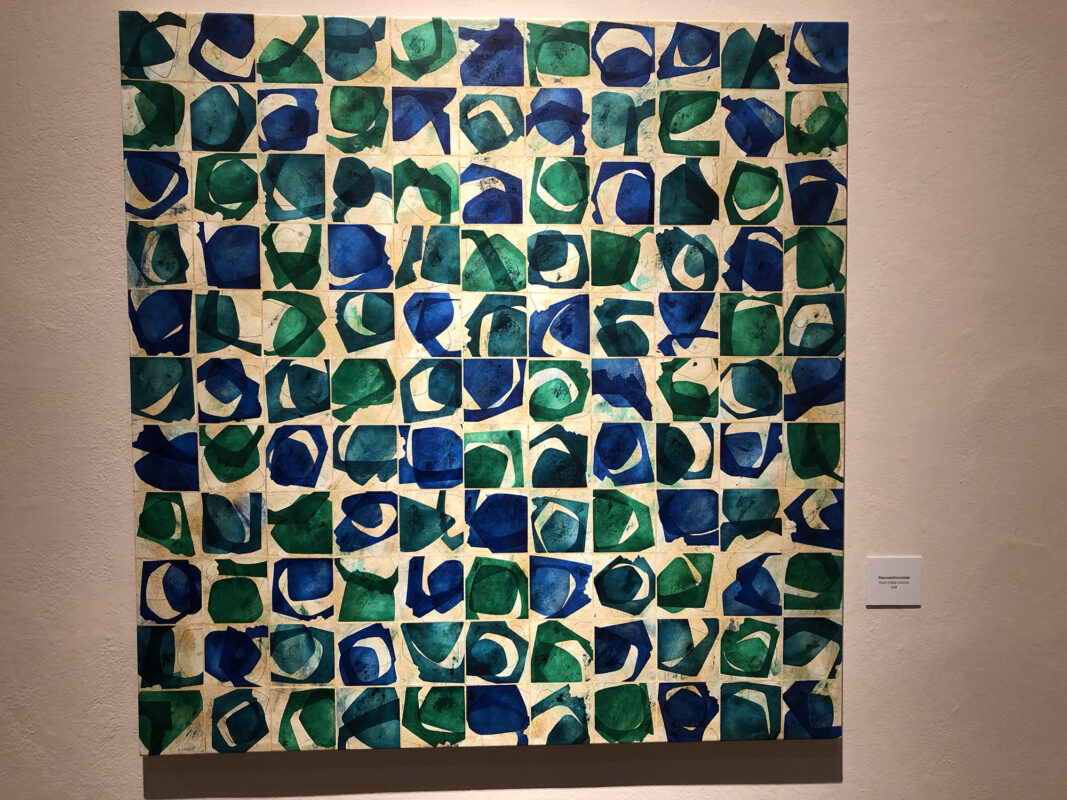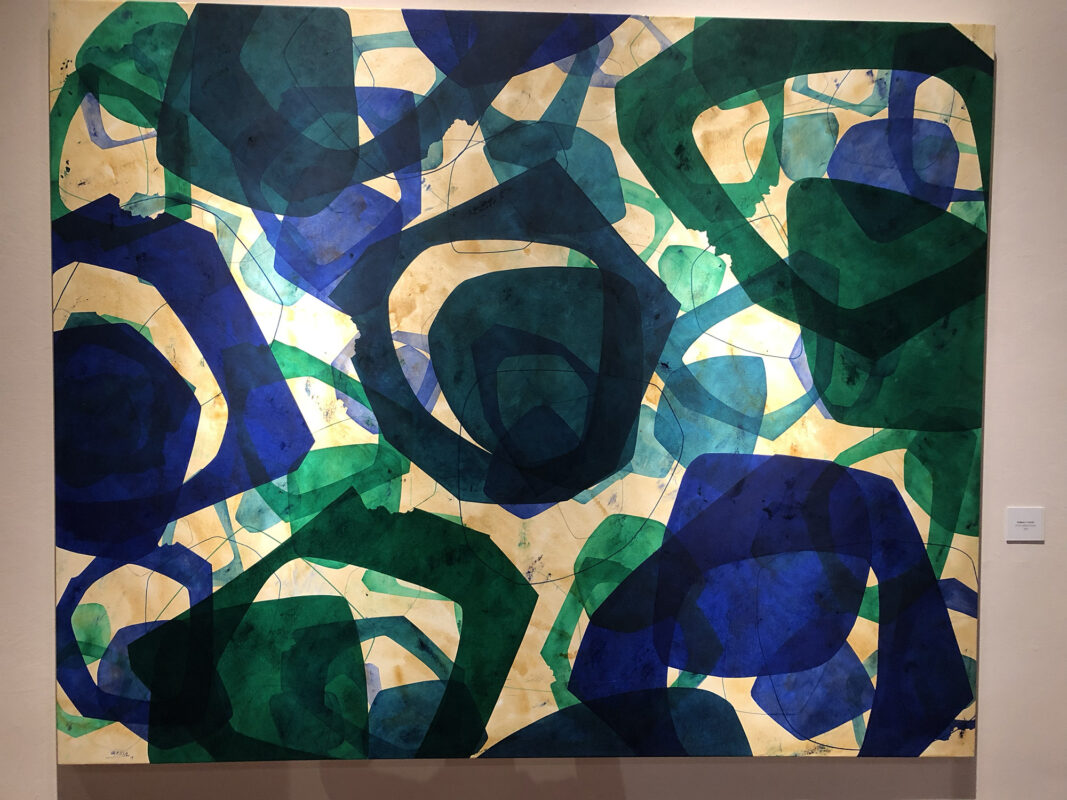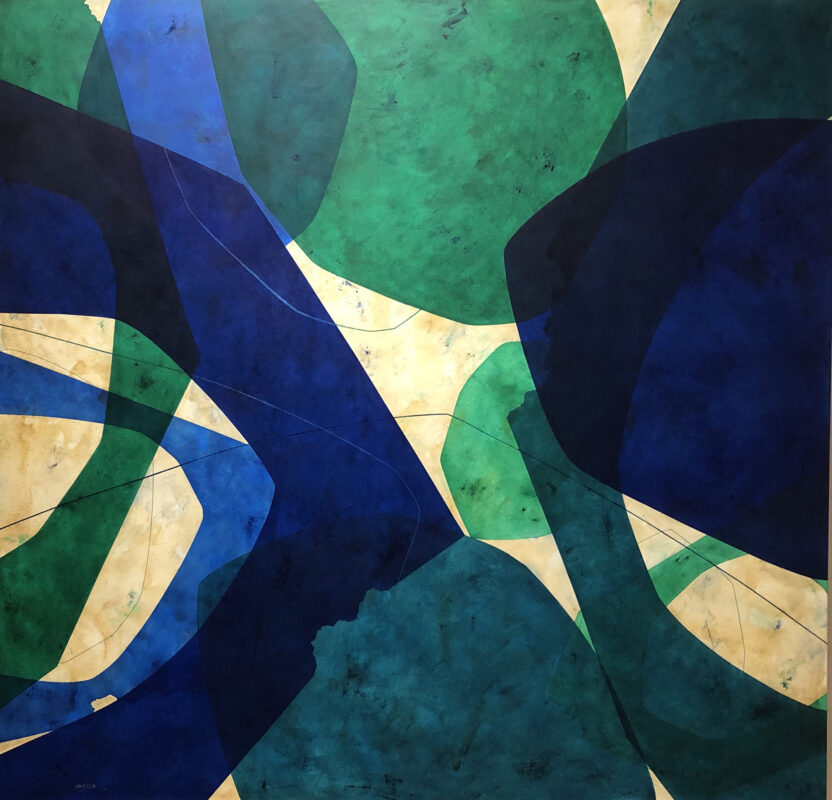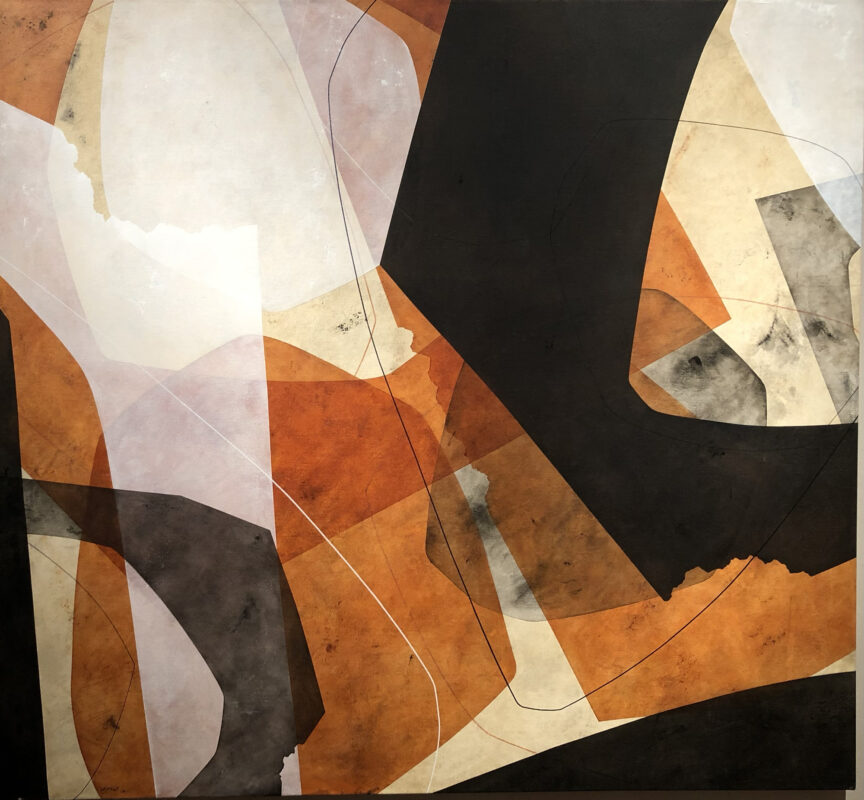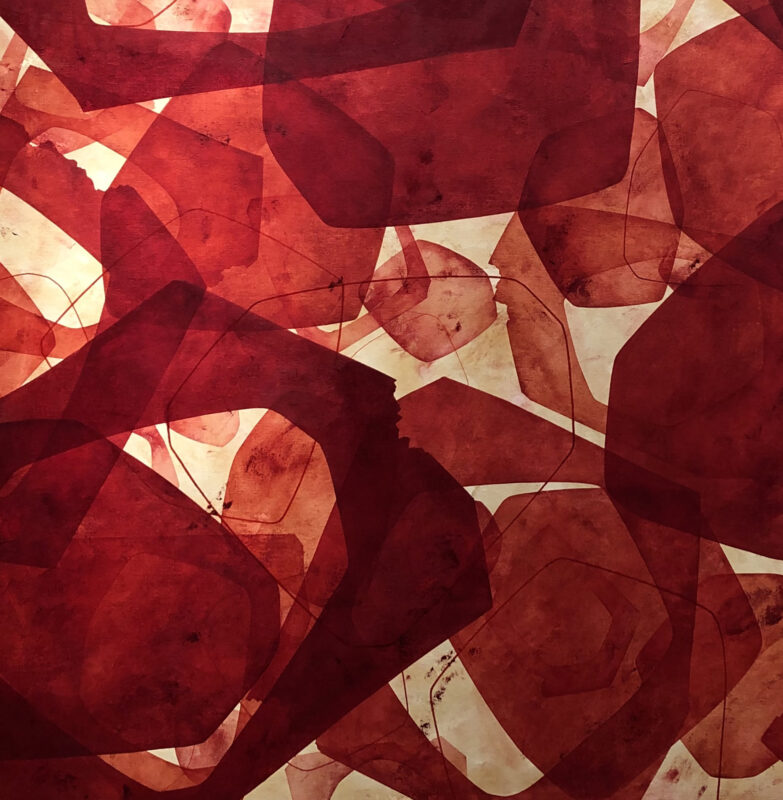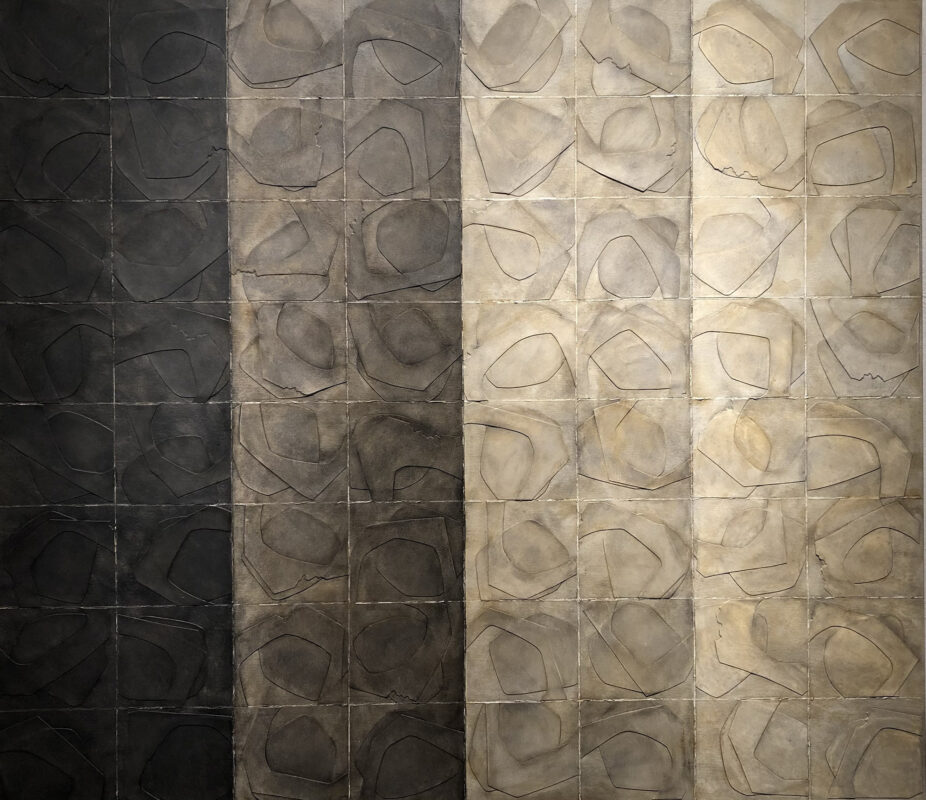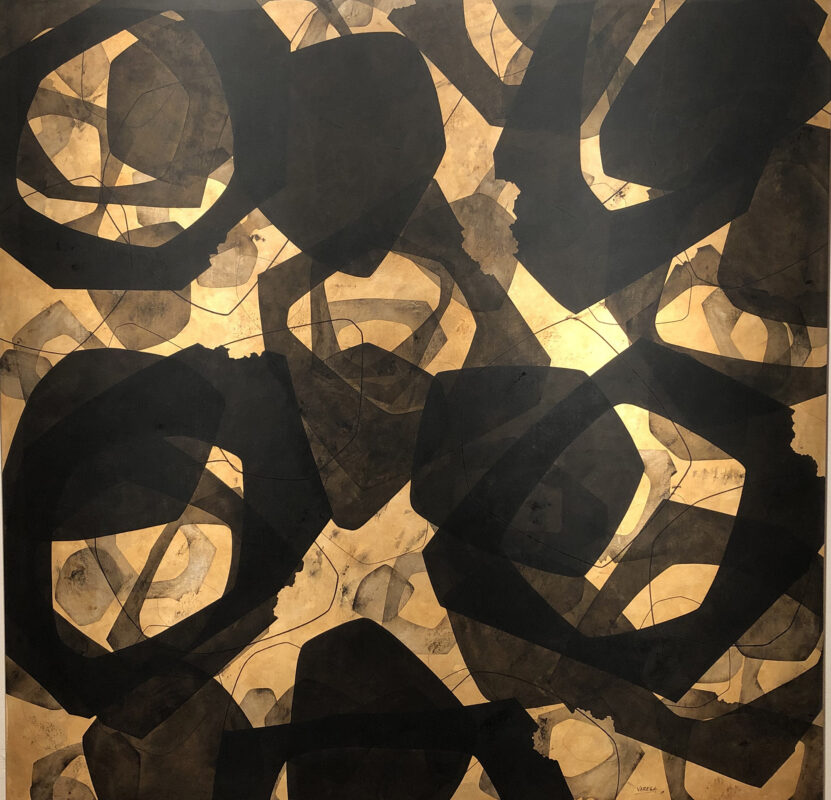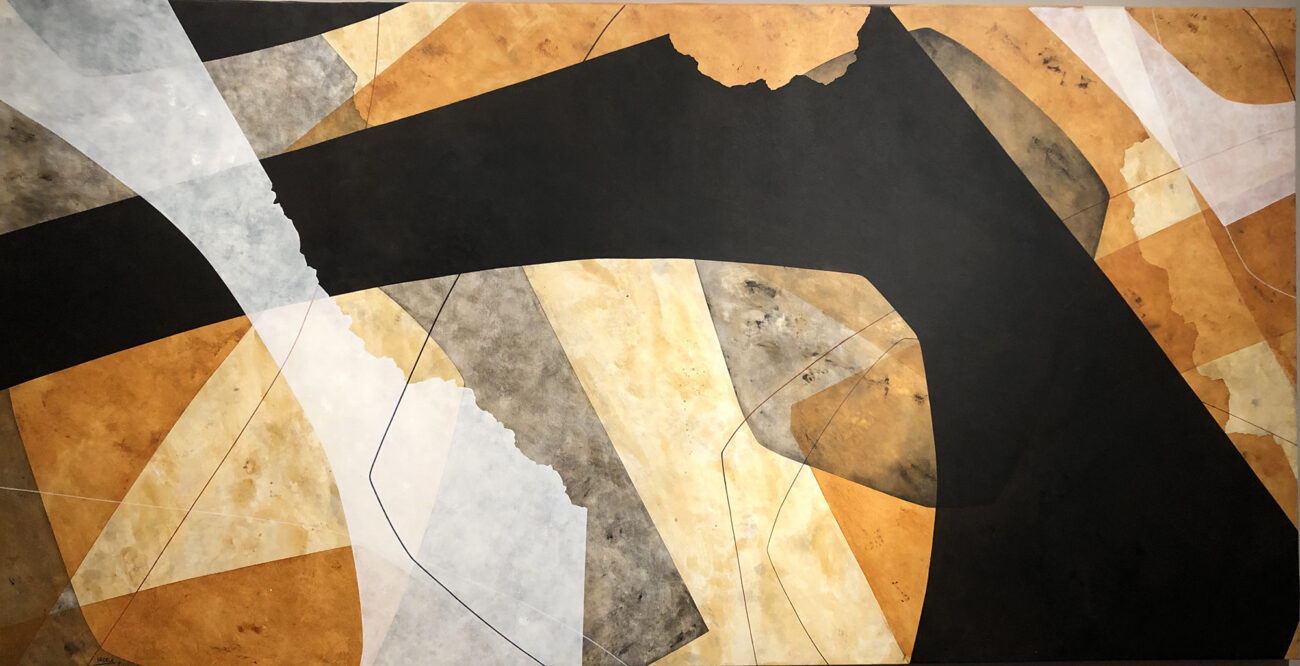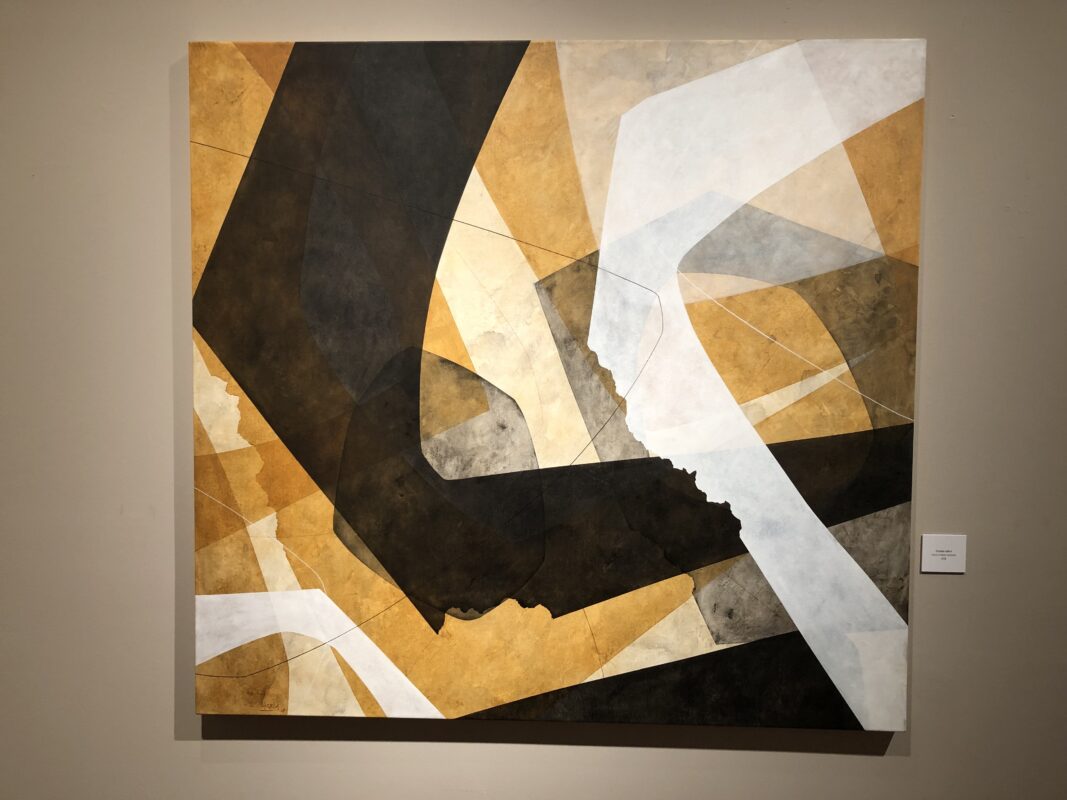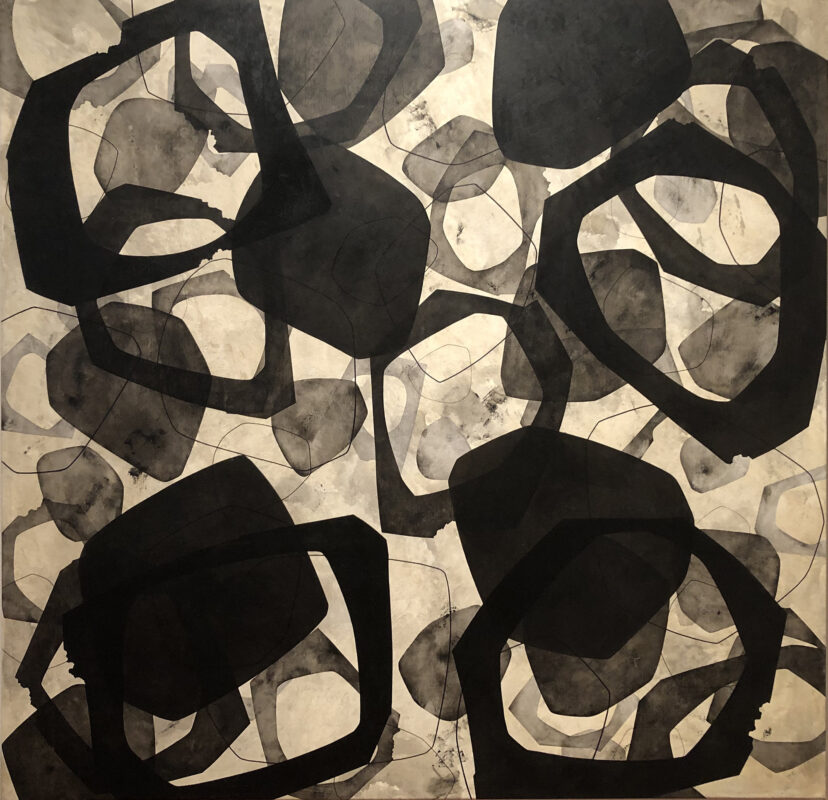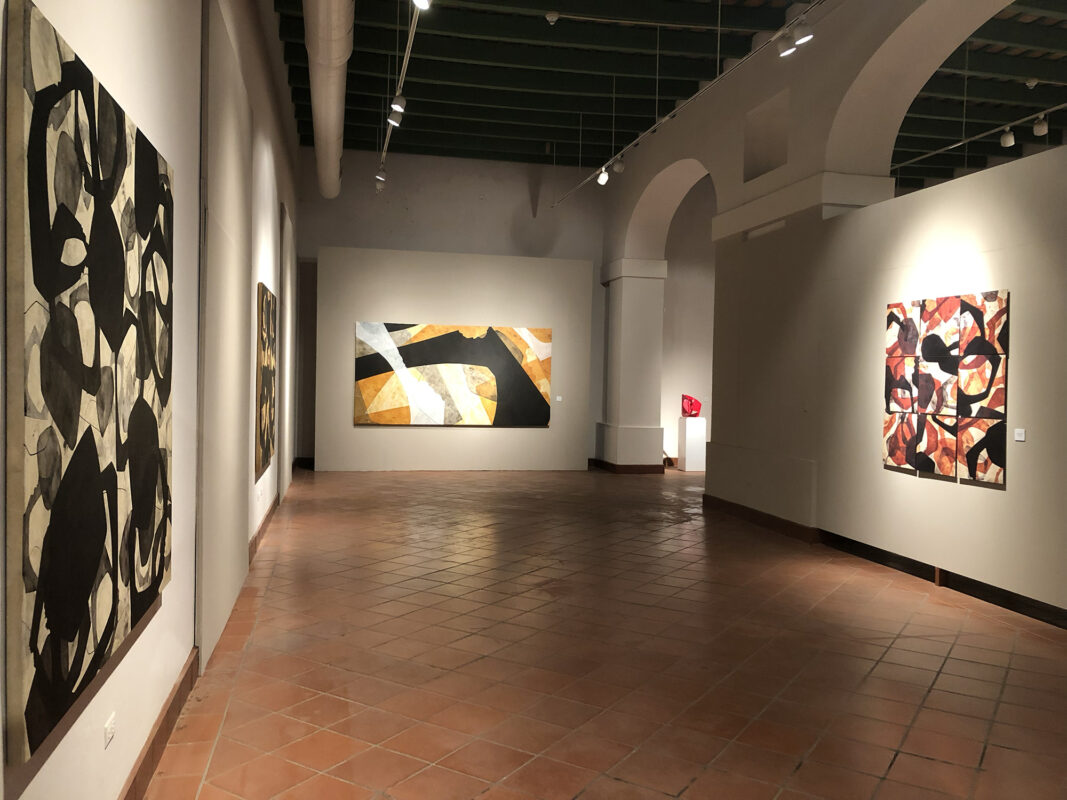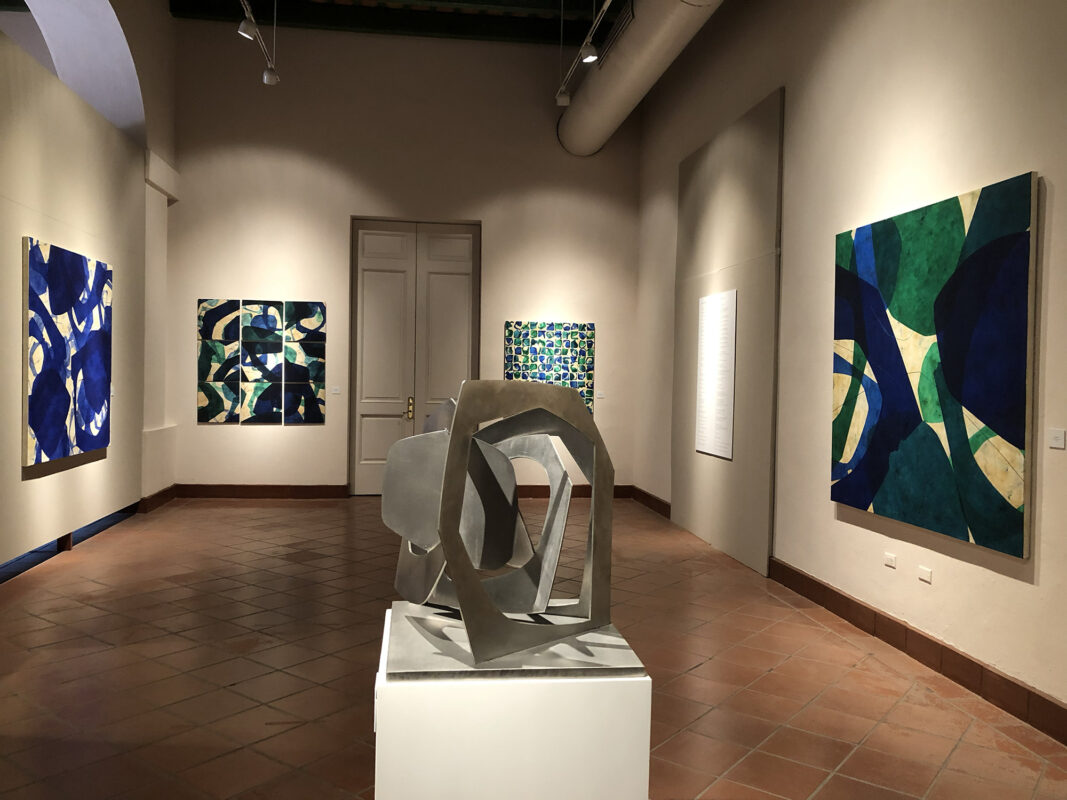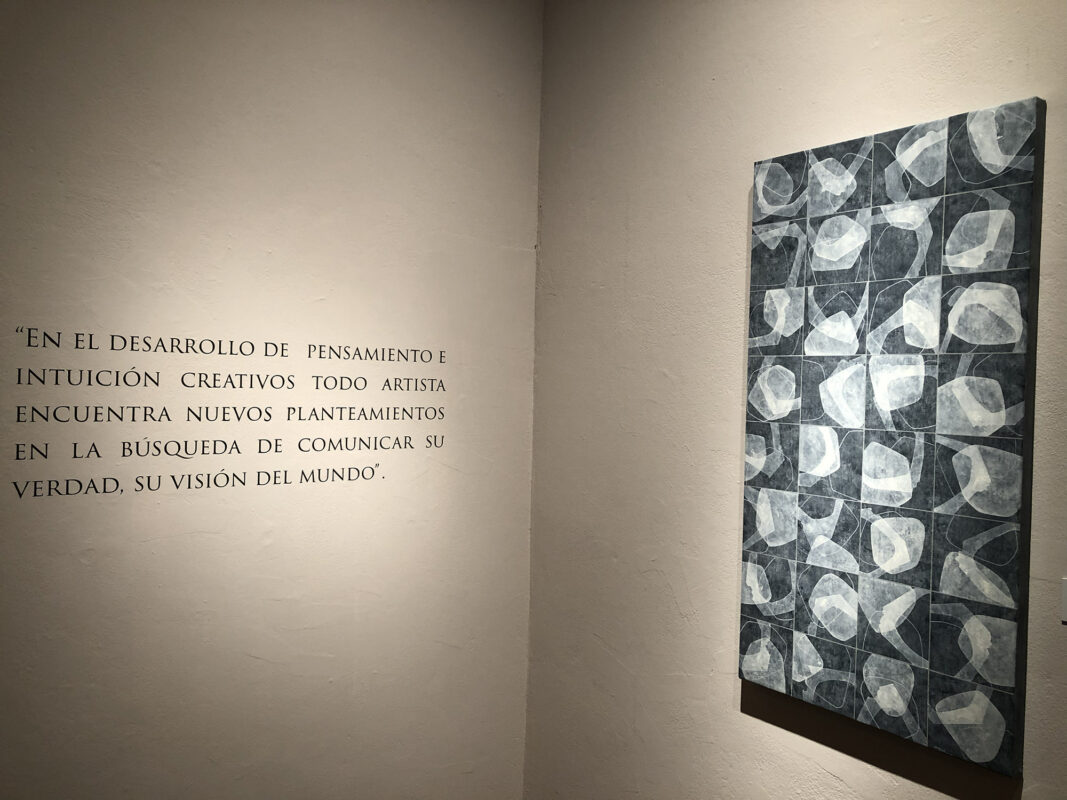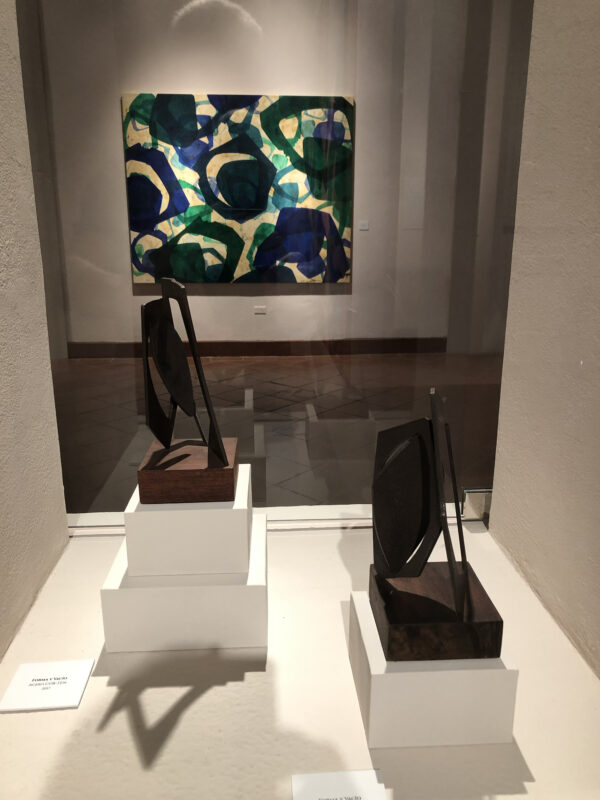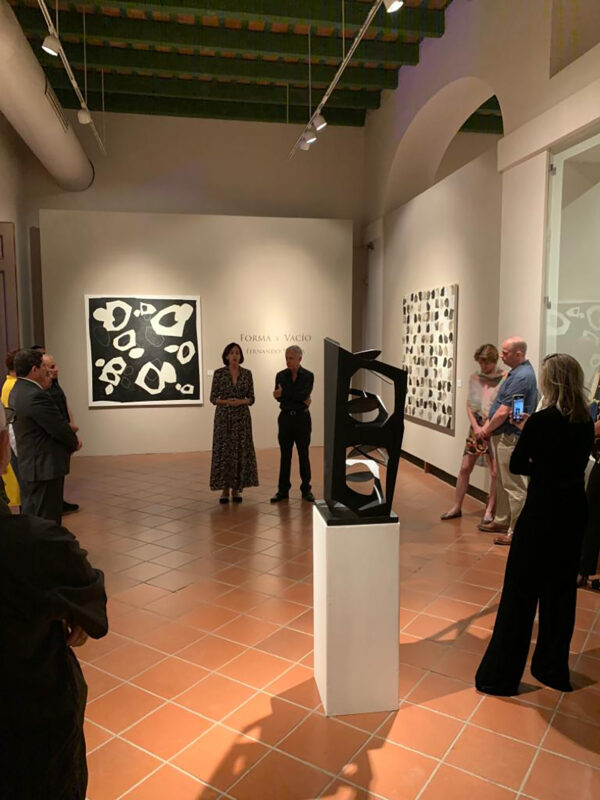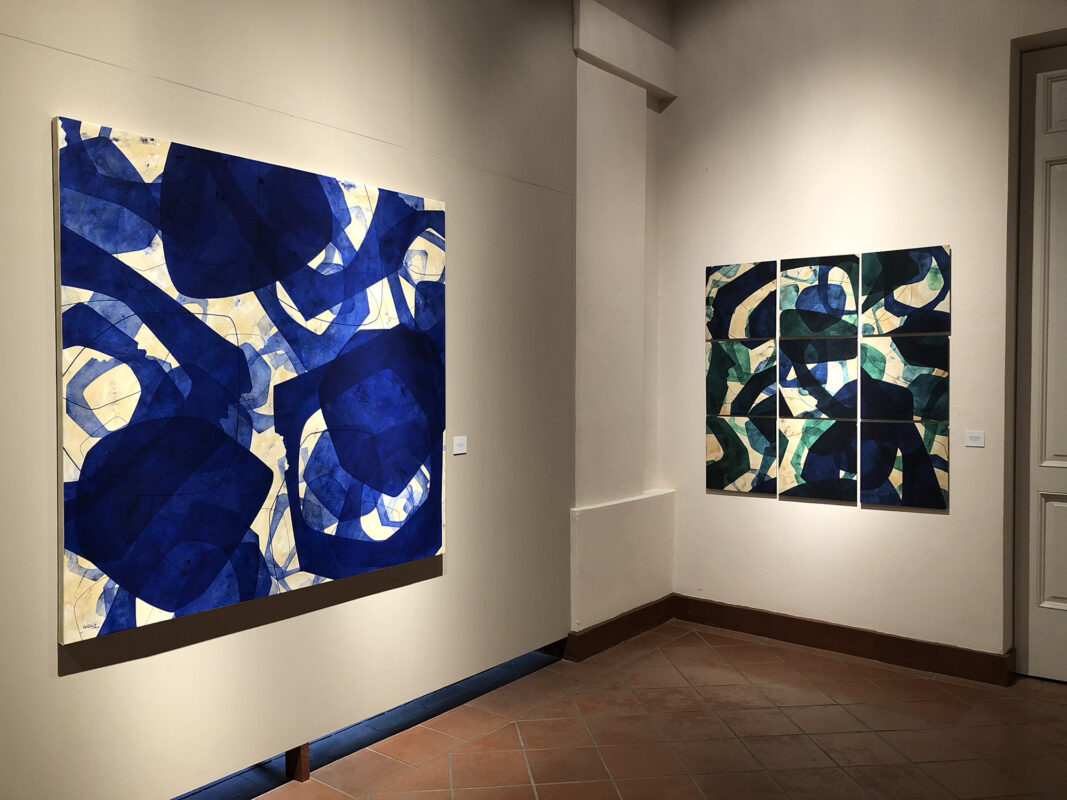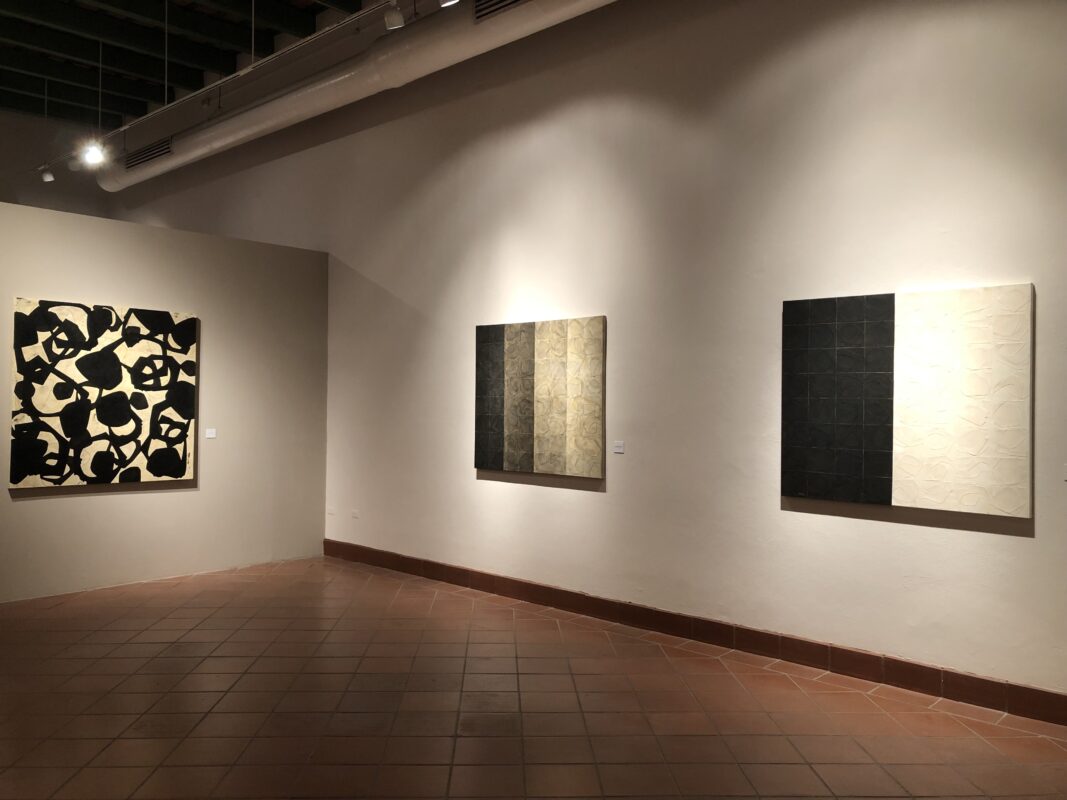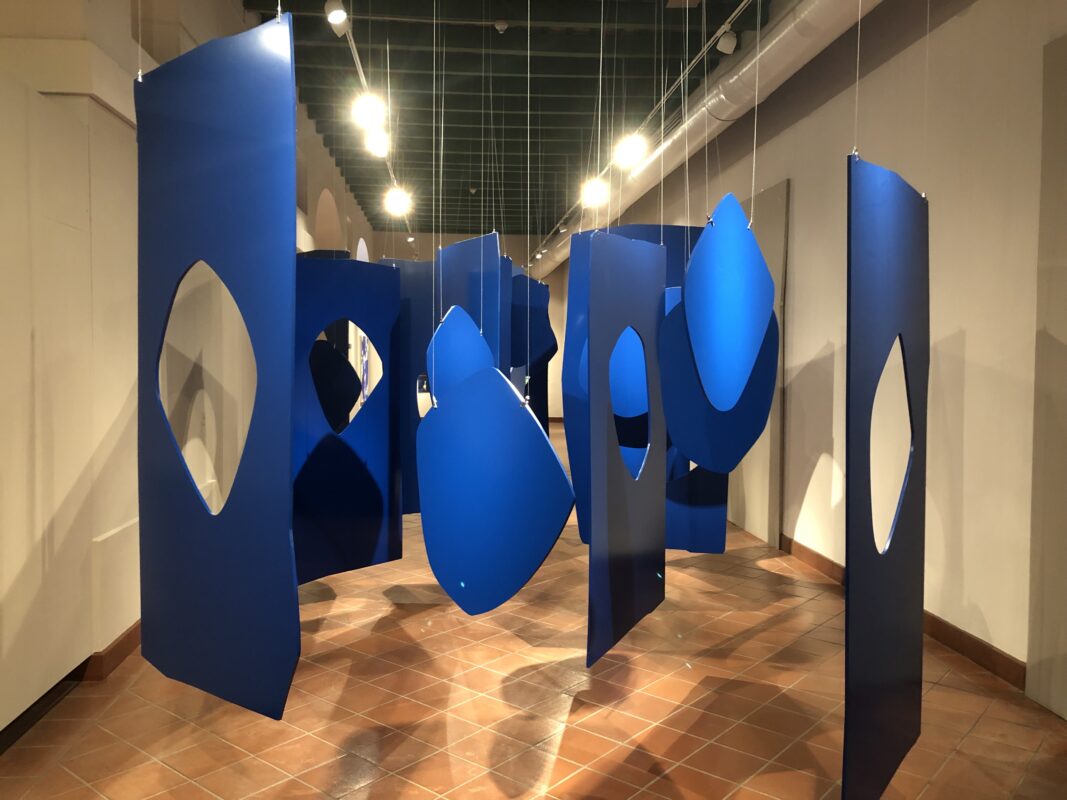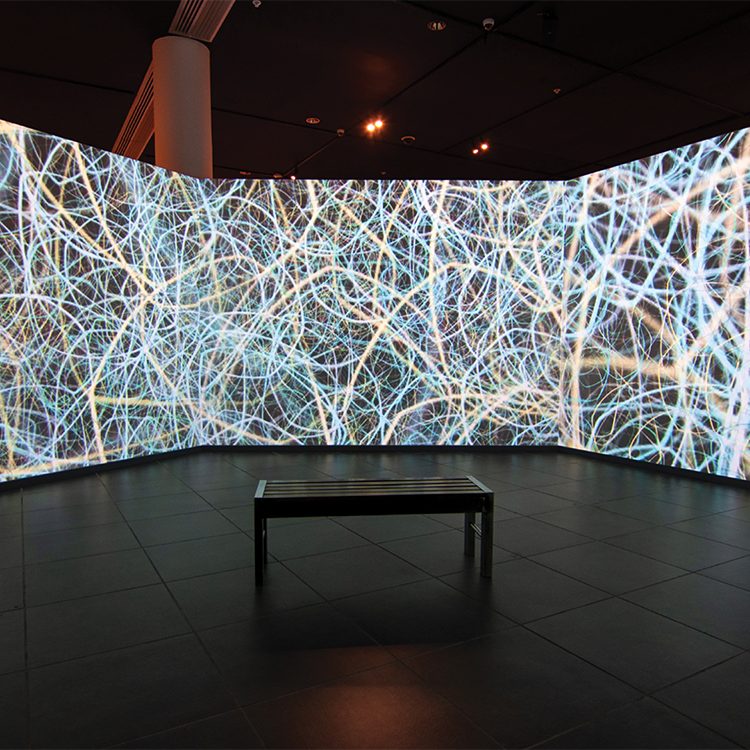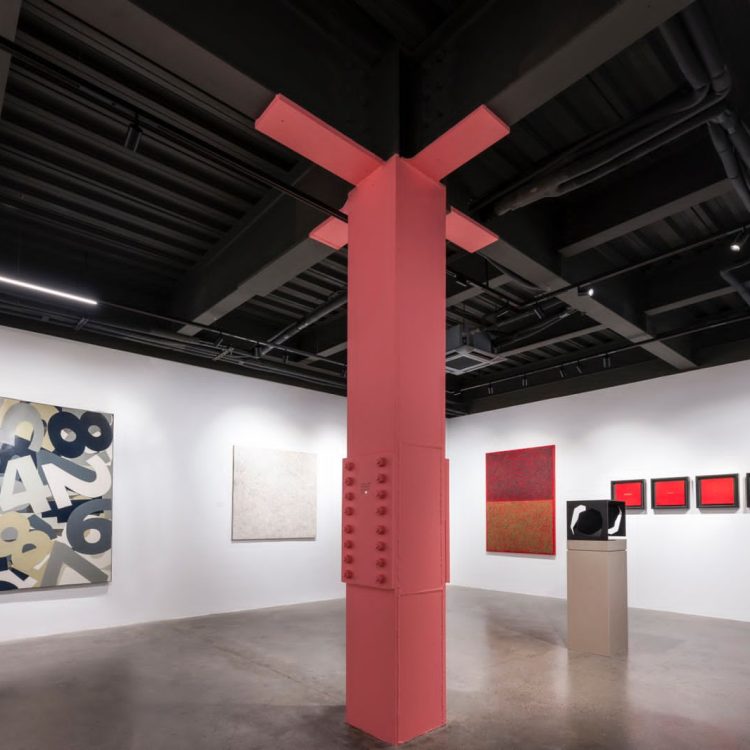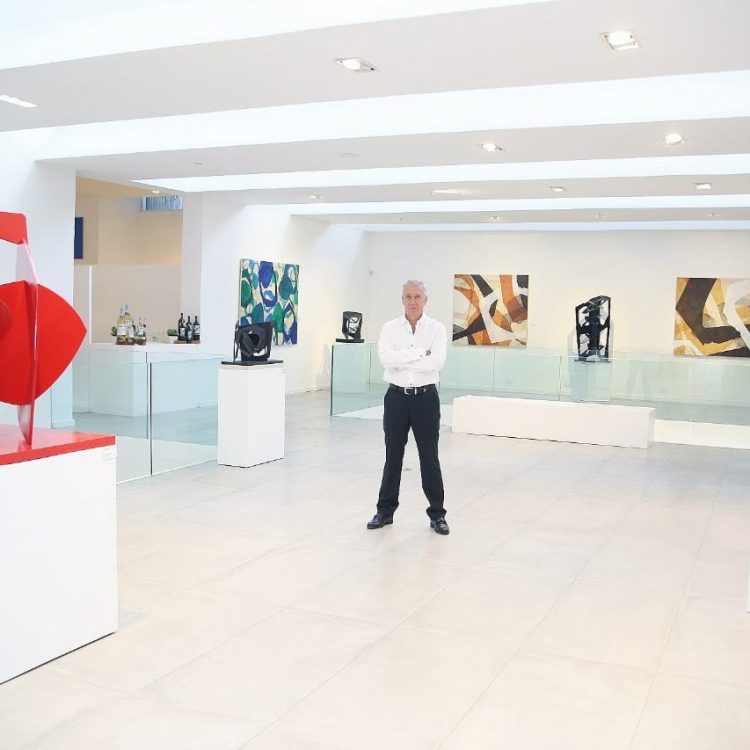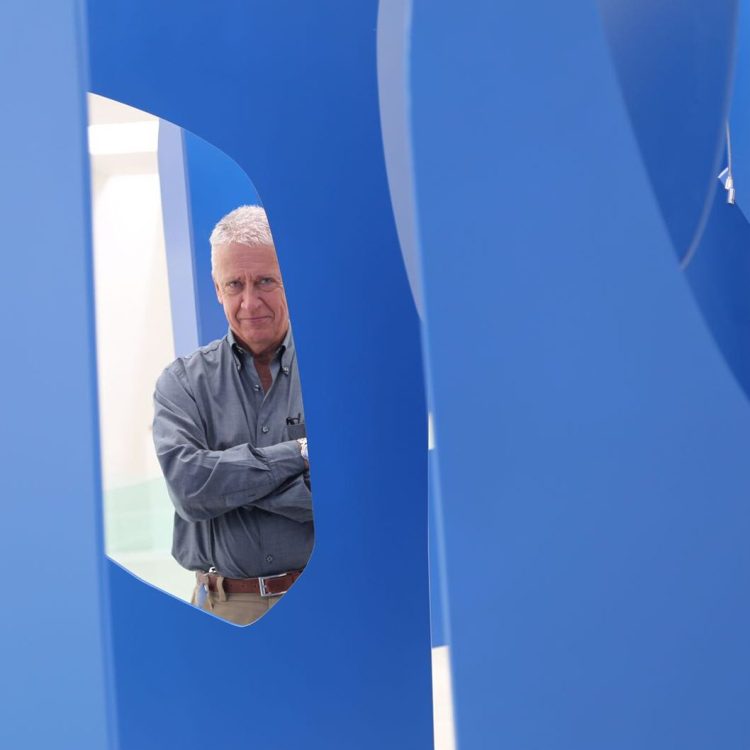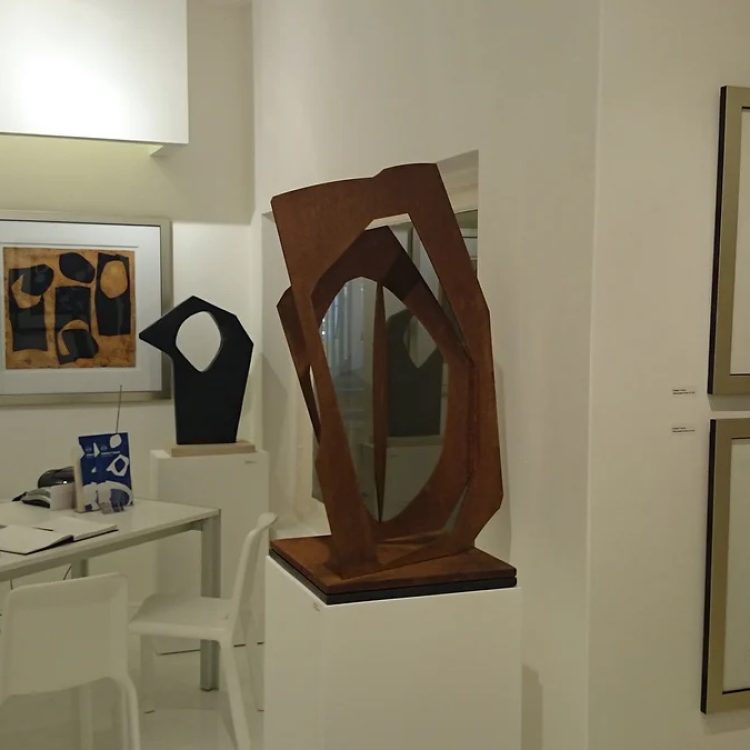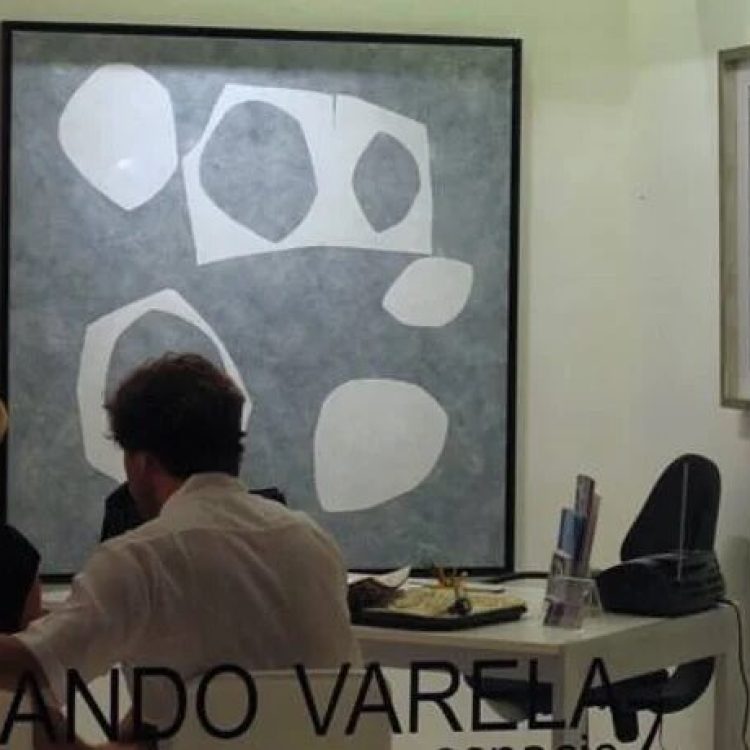Exhibitions > Forma y Vacío 2013-2018
Museum of the Americas
With my work, I aim to induce the viewer into an attitude of intuitive contemplation that, at the same time, requires their active participation to communicate with the spiritual and sensitive content of the piece.
– Fernando VARELA
The Form and Void series is based on the repetition of ovoid figures contained within irregular polygons with whimsical contours. Placed next to or on top of each other, they multiply within the plane and sometimes exceed its edges. Ovals and polygons delicately interlinked seem to configure mandalic compositions. Varela employs a rustic geometry, assembled with cutouts and discreetly saturated, even in cases where he abandons the tones of blues, greens, and grays to delve into ranges of greater chromatic intensity.
Reiteration, indeed, is not the reproduction of the identical. In the Form and Void series, differentiated sets are found where forms can coexist, appear individualized as in Fragmentations, or present themselves as incomplete as seen in Close-Ups. This multiplication is not rigid or identical as in minimalist practices; rather, in each case, the artist hints at variations in sizes, contours, and ways of relating.
Thus, the criteria of proximity between elements are discretionary, depending on the expressive intensity manifested in each work or in the subseries where they are grouped.
The empty oval, in turn, is based on a containing form that allows its discernment through contrast. But it is also a container of a foundational, initiatory potentiality. It returns here to the primordial—the egg and its envelope—a dual moment, a stage of encounter between two generating entities.
Here is the symbolism of the origin of life, a common idea in different cultures and one of the seeds of spiritualism in both the East and the West. Everything comes from that amniotic void, undifferentiated at first, allegorizing the egg as reproductive power. The oval (and its shell), as an abstract representation, suggests the mystery of vital genealogy.
Let's say that swarm of oval shapes and filamentous strokes multiplying allude to a primordial state in constant expansion. They can also be seen as a genetic script, with basic characters that progress recursively like a mantra. Everything, of course, is suggestive, allegorical, evocative, as befits the free syntax of visual arts.
Varela speaks to us about "visual metaphors," a way to recreate ideas through non-verbal means. The form, as a sign, forms a basic alphabet, adhering to the grammar of the senses. But words are always ambiguous, arbitrary. When one says or writes "void," suddenly that word captures the indeterminate, the immeasurable, in just five letters. The image, on the other hand, cannot name the void, but it can show it, give it shape, make it a presence or, as the artist himself suggests, "give support to an intuition."
Felix Suazo
Researcher, curator and art critic
